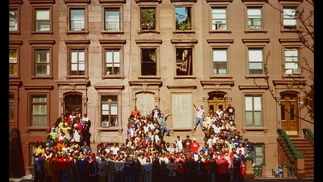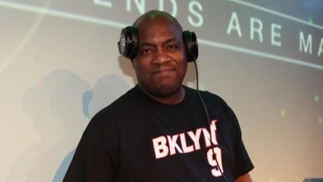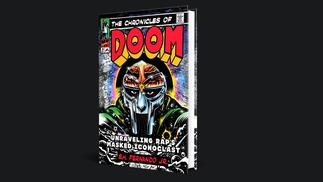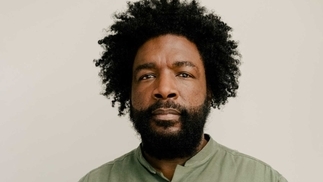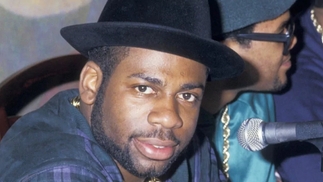TEEBS: CAN YOU FEEL IT?
We talk to the idiosyncratic producer ahead of his new album for FlyLo's label
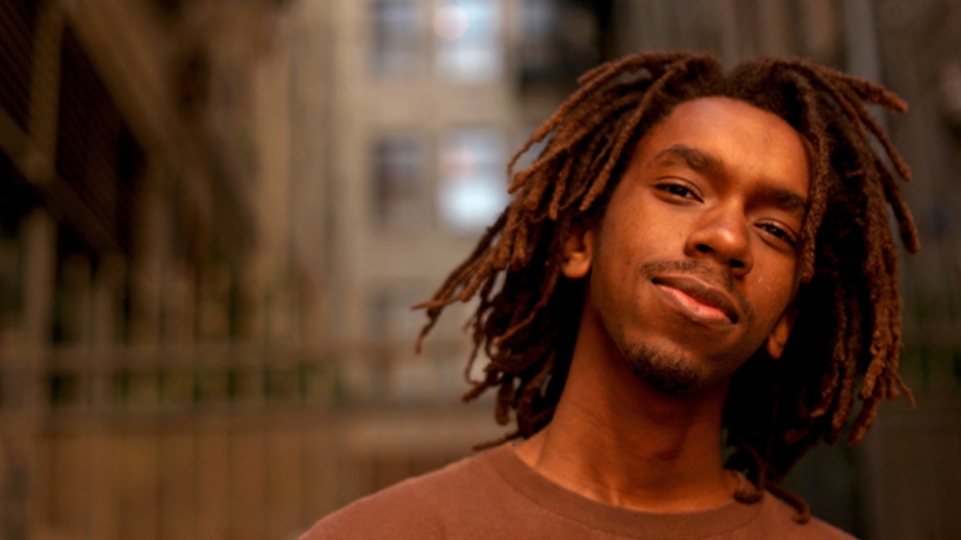
A visual artist as well as a musician, Mtendere Mandowa knows there are always different ways of looking at things. In fact, it’s only recently the Los Angeles resident has come to see himself as a musician at all, as he reveals when talking about ‘E s t a r a’, the second full-length album of bejewelled electronica under his Teebs alias, which follows up from 2010’s equally luscious debut ‘Ardour’.
“I went from not considering myself a musician to having a record,” he explains. ‘‘'E s t a r a’ came from looking back at my life between where I am now to the five years before ‘Ardour’ came out, thinking about how everything has changed and making a record about it. I’ve learnt to have no inhibitions with my music. It’s like ‘Ardour’s long-lost brother in a way.”
The family resemblance is clear. As with ‘Ardour’ and 2011’s stop-gap ‘Collections 01’ compilation, ‘E s t a r a’ is as soft and refulgent as an Impressionist painting; flickering samples, sibilant melodies and rustling beats smeared together into strokes which offer fresh details with every listen. Blurred but beautiful, it’s music that slips in and out of focus, meaning that whilst it’s easy to get absorbed in, it’s also difficult to get a grip on, seeming to emanate from somewhere between ambient and hip-hop. “It would be the odd one out in both of those categories,” he believes. “It’s like if you had five children and one had just the wrong hair colour. It doesn’t really fit but you accept it anyway.”
He’s not a complete sore thumb of course, having been taken into the bosom of the Brainfeeder clan by Flying Lotus, his former neighbour in a Los Angeles apartment block, who first persuaded Mtendere to release his sonic dabblings. “I definitely feel like I’m part of a family with Brainfeeder,” Mtendere says of the label also home to kindred spirits such as Thundercat, Samiyam and Flying Lotus himself. “That’s down to the way Lotus curates the label and draws inspiration from people living in Los Angeles.”
The album’s also had a helping hand from Australian musician Jonti, Norwegian jazz player Lars Horntveth, Italian multi-instrumentalist Populous and Prefuse 73, whose contributions not only illuminate their respective tracks, but also the multicultural outlook Mtendere — the son of parents from Malawi and Barbados who was originally born in New York — has always had on music.
“My first memories of music are being very annoyed because I couldn’t sleep with my parents playing loud calypso at parties at 1am,” he laughs. “But then when I started skateboarding I learnt how awesome music is and that brought in all kinds of diverse sounds because you’d watch videos where there’d be kids skating to traditional Spanish music next to the guy who liked punk. Then there was hip-hop — Madlib did a lot to my brain and then I started getting into Dabrye and Broadcast. I would fall in love with the most random things but I’d always be fascinated by the question of why would someone on one side of the world make music this way and not that way? Having all that around me in my palette made me want to make music.”
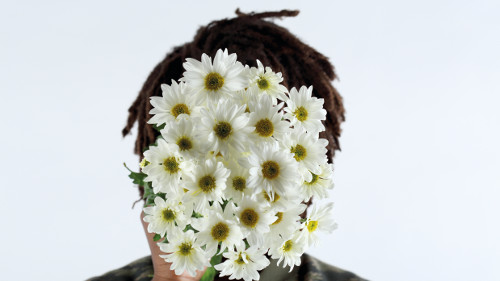
SAMPLING LIFE
The hip-hop ethic of unearthing and recontextualising old samples also informs Teebs’ visual art. Like plenty of beatsmiths before him Mtendere is regularly found rifling through the crates of old vinyl in secondhand record stores, yet he’s not just searching for dusty old breaks to breathe life into, but also for the most intriguing sleeves to catch his eye. Using them as a palimpsest, Mtendere then paints over them so that — much like his music — the old layers beneath are blended with new patterns in kaleidoscopic pieces he regularly exhibits at art shows on the West Coast and beyond. “I think sampling is a way of life because everything you do is probably sampled from something else,” he elaborates. “I just like the idea of taking information and spitting it out, and those record sleeves follow that route of building on something else, making something different out of it.
“Emotional states inspire both, but different outside influences inspire different mediums,” he continues when asked whether his paintings are visual representations of his music. ‘Visually I’m inspired by colour palettes in the world and how things are jammed together in life — the interconnectivity of it all. Sonically it’s more literal — I’ll hear the way something sounds and start freaking out about the fact that things are just making noise the whole time.”
In both its very name and nature, ‘ambient’ music is explicitly inspired by the sounds of the surrounding environment that so fascinate Mtendere, and he’s not the first artist in the genre to explore the relationship between the optical and the aural. Ambient godfather Brian Eno has also created numerous visual artworks, and experimental musician David Toop studied the way silent artworks like painting and sculpture can also convey an impression of sound in his book ‘Sinister Resonance’, a notion which also gives Mtendere pause for thought.
“You definitely hear stuff when you look at things, although I’ve never really given it much consideration as a process because it happens naturally to me all the time,” he ruminates. “One thing I really love about certain sounds is how you feel like you’re suspended in a way that puts you off-balance. It’s this weird suspension where you’re just in one moment and I really see the connection between that kind of airiness and space that both minimalist ambient production and a painting can create.”

NATURAL FEEL
Yet what prevents ‘E s t a r a’ from completely drifting off into the ether — or up its own conceptual arse — is the haptic quality of this music. Samples from old records or borrowed instruments are recombined in a simple Fruity Loops set-up which maintains both their imperfections and a human touch, so what sounds like a digital mirage of gentle summer rain on ‘SOTM’ turns out to be tape hiss, and you can sense the air vibrating around the guitar strings on ‘Wavxxes’.
“I like the roughness of sounds and not trying to use the computer to its full capability of perfection,” says Mtendere “That layering and hands-on feeling is similar to the aesthetic of my paintings and it’s important to have the freedom to express that.”
That physicality is also something he tries to channel through his sporadic DJ sets, and although he’s the first to confess that he’s hardly in the business of churning out club bangers — ‘Most people think I’m crazy when I try to play this sort of music in a club!’ he laughs — his experiences behind the decks at clubs like Low End Theory have opened his eyes to more of music’s possibilities. “At first I was just trying not to put people into a coma so I was playing a lot more drums and things,” he admits. “But it’s really interesting and I really do enjoy being around people that have gone there to hear something. Even if they like it or hate it they’re there to experience it and try to understand it and I love that sense of communication.”
Can you feel it?

